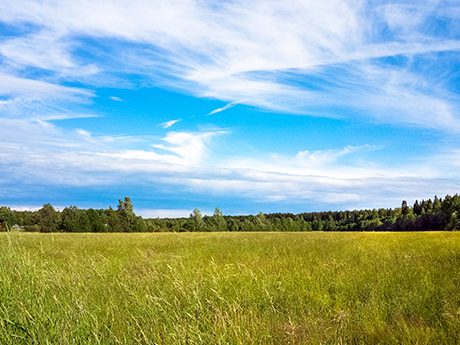Life sciences-anchored innovation districts are becoming increasingly popular as hubs for research and development in the biotech and pharmaceutical industries. These districts, also known as “innovation districts,” are characterized by clusters of companies, research institutions, supporting organizations, living areas, amenities and offices all located in close proximity. This grouping requires detailed planning and design strategies to maximize their potential for scientific exploration and success on an enormous, ambitious scale.
Master planning and engaging site civil engineering partners early on in the process can save time and money once a project reaches the design stage. This article is the first installment in a two-part series on life sciences innovation districts to discuss, first, the planning, and, then, the design elements required by these districts. Read about design in Part 2, here.
Fostering innovation, collaboration and productivity is at the heart of planning for life sciences innovation districts. The successes of famous examples such as North Carolina’s Research Triangle Park, Kendall Square in Cambridge, Mass. and Mission Bay in San Francisco indicate how beneficial a melting-pot mix of residential, commercial and research spaces can be when they concentrate talent from research institutions, life sciences innovators, universities and the surrounding community.

“Many life sciences institutions want to co-locate all aspects of their business relatively close to each other, to inspire connection between their employees, friends and counterparts in these districts. That’s tricky with industries like life sciences because you have traditionally separate uses like research and development labs (R&D), offices for finance and education, production, warehousing and distribution. Co-locating these uses encourages the people from each aspect to share ideas and build a community around the business,” says Dan Danvers, RLA, a project manager with Bohler, a land development consulting and technical design company.
These developments allow businesses to accelerate work with local and state officials and to create innovative spaces that would otherwise be difficult to achieve through traditional methods of land acquisition and development. The result is the generation of dense business and community uses in a single district that streamlines development, facilitates the sharing of ideas amongst tenants and benefits the community.
Site Selection — End Goals, Permits and Utilities

“In many cases, the ultimate strategy is going to be determined by what the final buildout will be. Then the question becomes: what do you need on Day One, and where do you expect the campus to ultimately grow?” says Charlie Yowell, a principal in Bohler’s Raleigh office. “Then developers can ask themselves if they are planning for R&D, classrooms, housing or manufacturing. This will inform the scale of infrastructure needed — roadways, employee parking, whether you’ll need to extend utilities to certain areas before they’re built (a process that can be sped up with ease if you obtain the permits long before you’re ready to build).”
“That’s how you can keep flexibility in mind — with a lot of up-front planning to get to that stage. That allows you to have resilience and agility moving forward,” elaborates Yowell.
The availability of utilities can make or break a site for a large undertaking like innovation districts. “Water and sewer, fire suppression/emergency systems and power are the three most important utilities when it comes to site selection and analysis,” emphasizes Yowell.
Fitting in with the Community
Innovation districts often require a mix of land uses, including laboratory space, offices and housing, so suitability with the surrounding land and its uses deserves special consideration. Zoning regulations and permits need to be flexible enough to accommodate use while promoting safety for and compatibility with the community.
Successful innovation districts require engagement with the local community and partnerships with local businesses, universities and government agencies. These partnerships can help to ensure that the district is meeting the needs of the community and providing economic opportunities. Engaging early with the community and the jurisdiction helps streamline this process, minimizing objections and delays.
Finally, innovation districts should be designed with people and the environment in mind if these developments are going to serve the community in the long term. Sustainable, energy-efficient buildings, green spaces with integrated stormwater, walkability and multi-modal transportation options allow for an enduring connection between the campus and the people who call it home.
Infrastructure Development
Once a site has been chosen, arranging, staging and constructing adequate infrastructure (including water, power, transportation and waste management) supports the needs of the life sciences innovation district.
“With life sciences, power is a big consideration,” explains Yowell. “Working with the local utility providers and talking to them ahead of time about anticipated needs is critical. Is there going to be a substation nearby? What sorts of power backups and redundancies are desired? Is on-site power generation feasible? Will there need to be infrastructure to support future use? What does the timeline look like? Who’s going to pay for it? These are the questions to consider early.”
In promoting safety and success, planning for water and sewer capabilities is essential, especially when it comes to tenants who may require backups and redundancies for those utilities. Occasionally municipalities may be concerned with the type of waste generated, especially if there’s a medicine or manufacturing element involved within the district.
“Depending upon the type of use, considerations might need to include the kind of effluent that’s put back into the sewer system,” explains Yowell. “These systems could require pretreatment and/or monitoring manholes. You want to make sure you’re well-prepared from a cost perspective. Water capacity for user-specific needs and being able to address emergencies as well as checking with the local jurisdiction to ensure they will be able to accept certain types of effluent are all part of the due diligence that lets you maintain momentum.”
Site Planning Considerations
“Building location and grading are key to creating a sense of place,” Danvers says. “How do you want to present the building to guests and employees so they enjoy spending time here? We consider building placement, sculpting the parking areas and the driveways and ensure the approach is both navigable and friendly. When it comes to designing amenity areas, we’re trying to encourage people to gather but also to facilitate thoughtful areas — little pockets where people can retreat and think alone if they need to.”
“We strive to consider the business needs while simultaneously fitting development into the landscape and reflecting the natural ecology,” explains Danvers. “Our teams can incorporate a revegetation plan to meet a projects’ sustainability or carbon goals, but we also address solar needs and manage water flows across the site. In many cases, the critical question is, how do you turn unconventional sites — raw land or a brownfield area or a previously developed industrial site — into a location where people want to spend most of their time?”
In our next article, we’ll cover how design can help further the goals that proper planning sets in motion.
Bohler is a content partner of REBusinessOnline. For more articles from and news about Bohler, click here.


